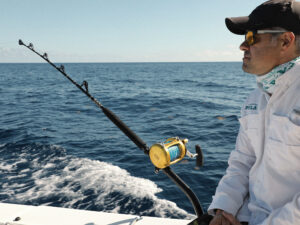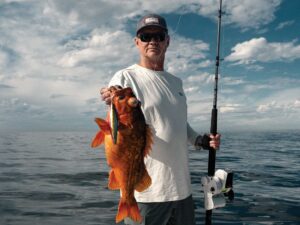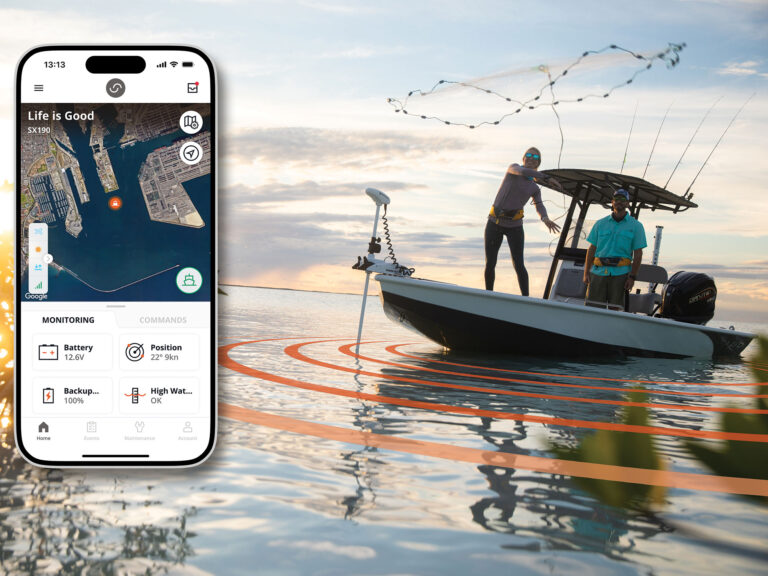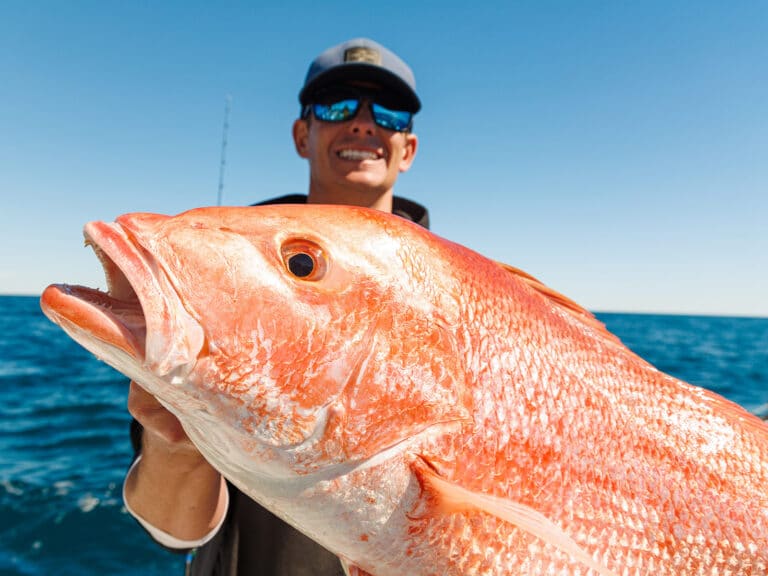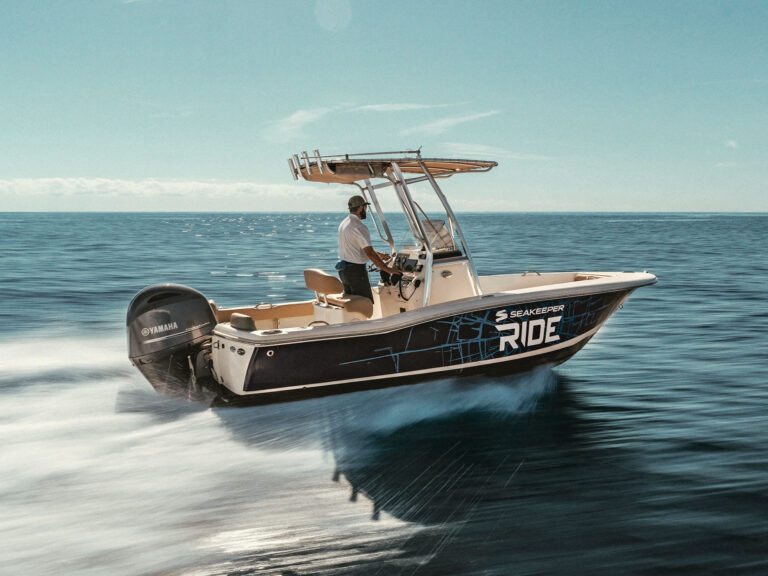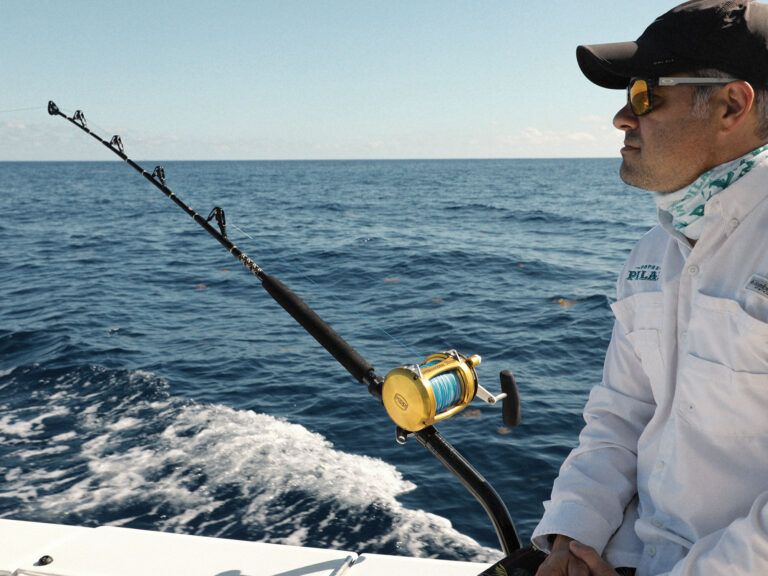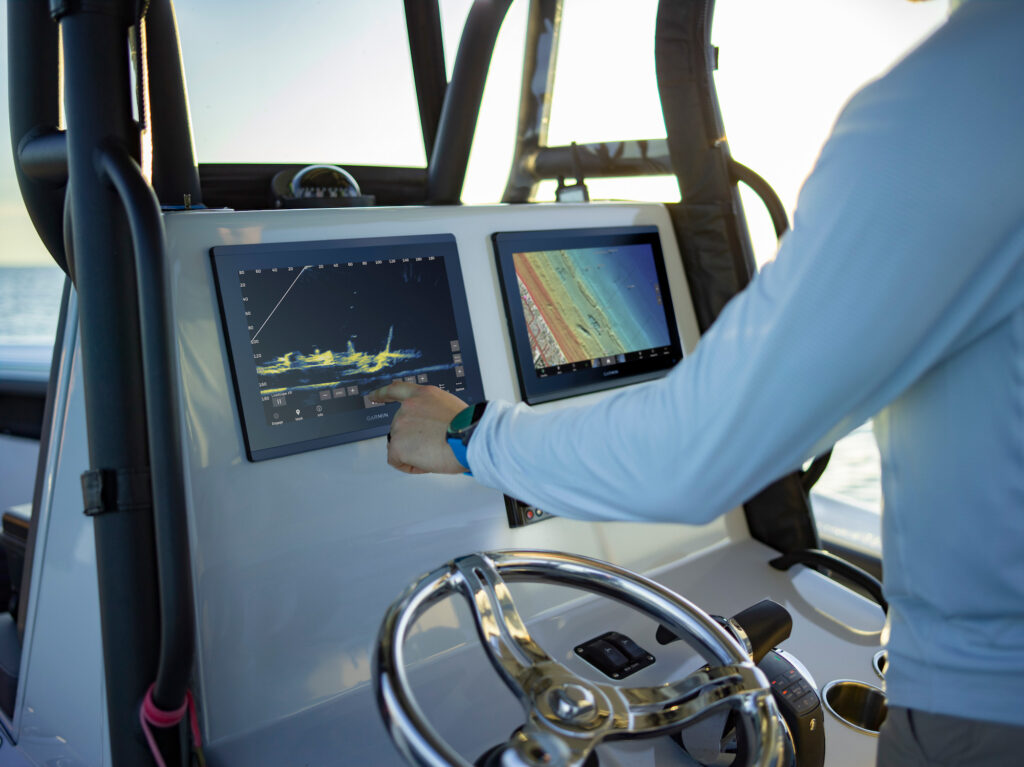
“Saltwater anglers are so far behind freshwater fishing it’s hilarious,” Capt. Spenser Samplawski laughs.
Of course, he’s talking about forward-facing sonar. The all-seeing fish finder has changed freshwater fishing. You may have heard it mentioned a time or two when watching a bass fishing tournament. Now the technology is taking over saltwater. But finding fish with forward-facing sonar isn’t as easy as it looks, so Samplawski and other crossover anglers are developing tactics to bring the new technology to the brine.
Chronicling the Sonar Revolution
Forward-facing sonar has only been available for a few years and freshwater anglers were the first to take advantage. As the technology improves, and the systems become more robust, saltwater anglers are experimenting with the powerful fish-finding tool.
Unlike traditional sonar — which only shows structure and fish below the boat — side-scan, forward-facing and 360 sonar locate targets hundreds of feet from the boat. Forward-facing sonar is the most powerful, allowing an angler to direct the sonar beam and detect fish in real time. It’s like an underwater video camera, watching how a fish reacts to a lure. Some anglers and electronics manufacturers also call it “live sonar,” for obvious reasons.
Spenser Samplawski is a pro guide in Door County, Wisconsin, but he’s brought his sonar skills to the Gulf Coast. “If saltwater anglers learn to use forward-facing sonar, they will dominate,” he says. To unlock the potential of forward-facing sonar, anglers have to solve the problem of rigging the transducer and display, learning to interpret the data and using tactics that complement the technology.
Rigging for Salt
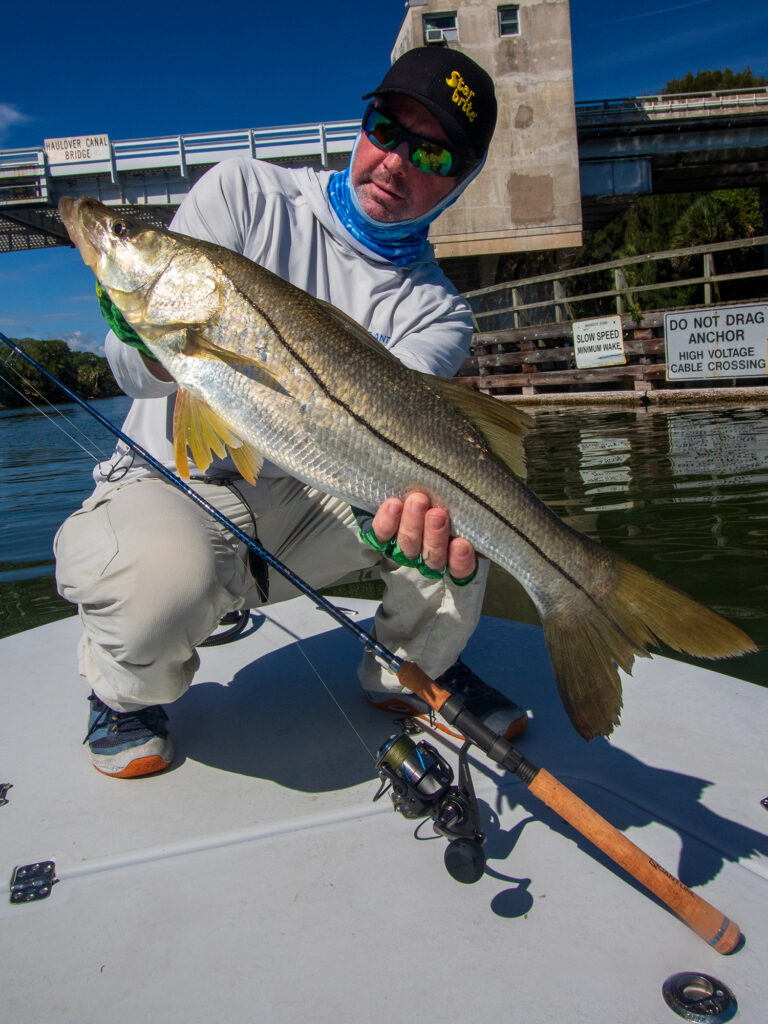
One of the biggest challenges is rigging a forward-facing transducer to a saltwater fishing boat. To show a 360-degree view of structure and fish, the forward-facing transducer needs to rotate below the water. To accomplish this, anglers mount the transducer on a pole or a trolling motor. On his bass boat, Samplawski uses the trolling motor mount. “As the trolling motor turns, it directs the sonar signal,” he explains.
Samplawski says a foot-pedal controlled trolling motor and bow-mount display are an advantage. “When I’m searching for fish, I can stand on the bow, use my foot to direct the transducer, watch the display for fish and fire off casts,” he explains.
Another option is mounting the transducer to a pole connected to the boat with a bracket. “I can control the trolling motor with a remote and turn the pole to direct the transducer signal,” Samplawski says. “When the trolling motor is in anchor lock, I can still turn the transducer to search for fish.”
Sam Root, a photographer and writer from Miami, Florida, installed forward-facing sonar on his flats boat. “I use a pole mount and a portable fish finder so I don’t have to run wires to my console,” he says. The portable fish finder comes with a battery and transducer cable. Root used an aftermarket pole to attach the transducer to his boat. “When I’m not using it, I remove the transducer and fish finder so it doesn’t get in the way.”
Another option is mounting the transducer on the stern. Captain Chris Britton uses his forward-facing sonar to target tarpon and snook around Stuart, Florida.
“Most of my fishing is out of the back of the boat,” he says. When he’s searching for snook near bridge pilings or positioning the boat up current of rolling tarpon, the stern mount is easier to control and closer to the action. He adds, “When I’m not using the transducer it doesn’t interfere with fishing.”
Reading the Data
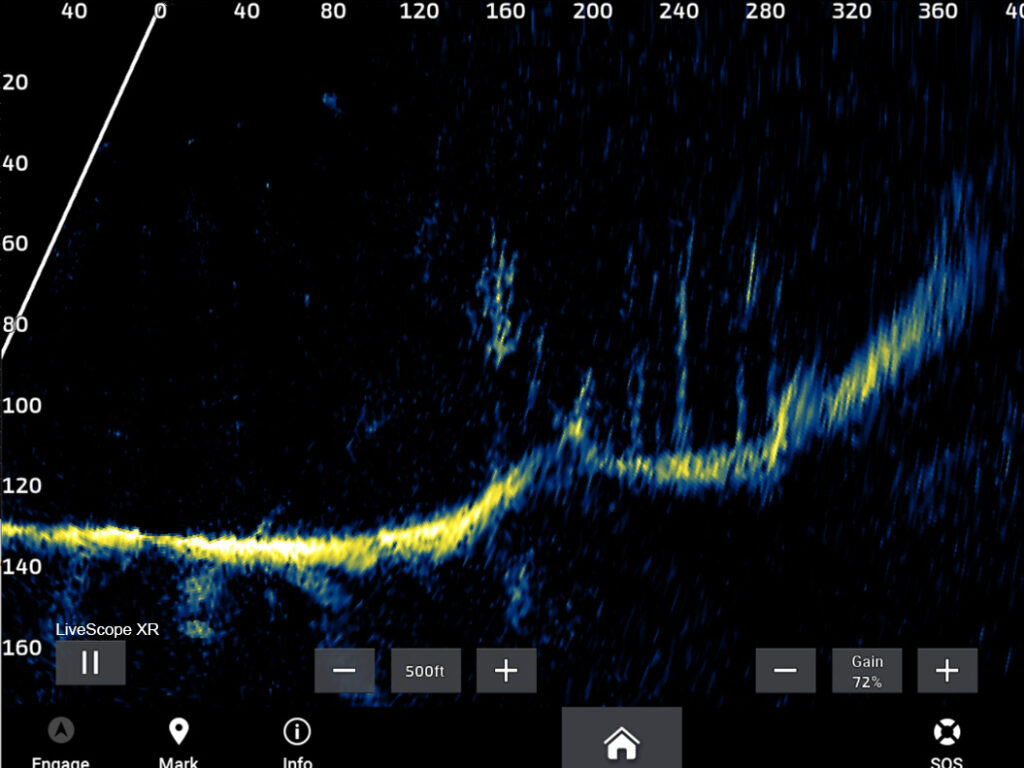
One of the biggest misconceptions is that forward-facing sonar is easy to use. Samplawski says, “You can’t just turn on the fish finder and expect to catch more fish.” Interpreting the data requires a little practice.
The latest sonar systems offer several modes: 360 view, down view, wide-angle, and forward view. Explained: The 360 view is good for locating structure, down view marks fish below the boat, wide-angle gives a view of fish and structure in a large area ahead of the transducer, while forward-facing offers the most detail.
Gerald Spohrer is a Louisiana inshore guide and professional angler on the bass tournament scene. “On the bass tour, I fish against the best anglers who use forward-facing sonar to make a living,” he says.
Unlike clear, clean freshwater, Spohrer says denser saltwater makes interpreting the data more difficult. “In freshwater, I’m looking for individual fish reacting to my lure, but in saltwater I don’t get as precise target separation,” he says.
For a better view, Spohrer says, “Using the sonar in ‘auto’ mode may not work.” By adjusting the gain and contrast, he can dial the sonar into a school of trout or a single tripletail hiding in structure.
“In freshwater I can turn up the gain to make the transducer ping hotter, but in saltwater the screen gets brighter but I don’t get the target separation.” Instead, he balances the settings to produce a sharper image.
Live Sonar Inspired Tactics
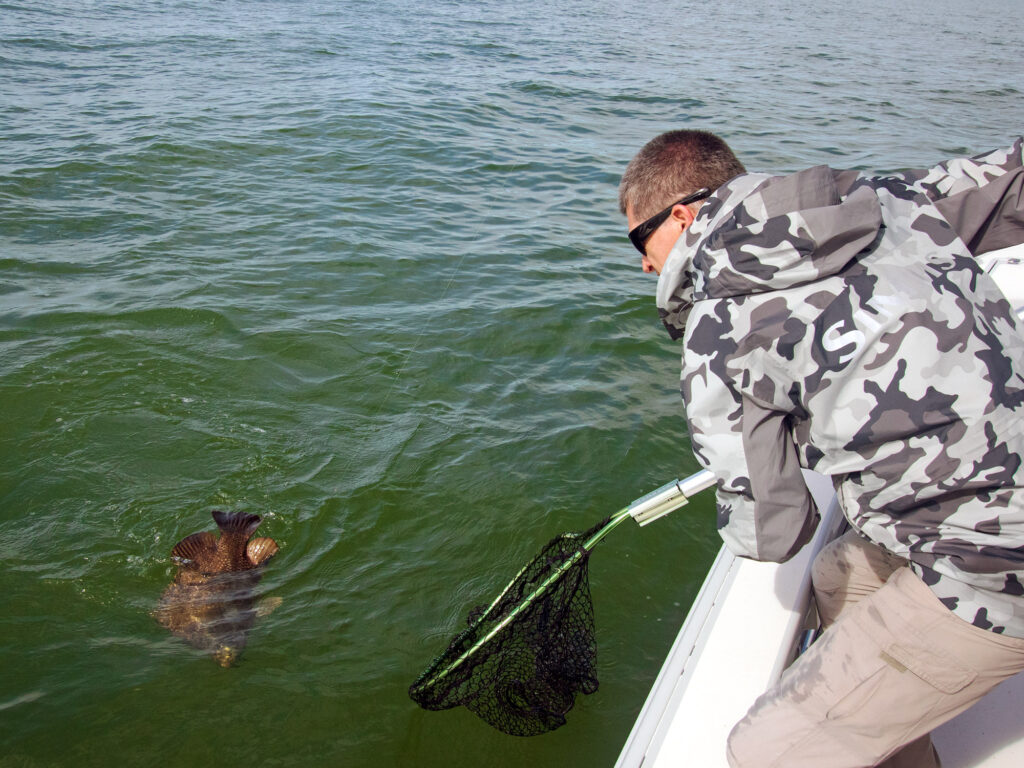
After spotting fish with forward-facing sonar, anglers still have to catch them. To take advantage of the tech, anglers spawned new tackle and tactics optimized for the all-seeing sonar. Forward-facing sonar tactics, lures and even fishing line are readily available in the freshwater scene. Some of the stuff transfers to salt, but saltwater anglers have modified or developed their own techniques for inshore and offshore fishing. For example, in early 2024, Berkley introduced three specialized lures for forward facing sonar.
Jose Chavez, director of product development at Z-Man Fishing, has two years of forward-facing sonar experience focused on designing lures and tactics to complement the technology. The result is Z-Man’s new Graph ShadZ, a swimbait optimized to appear on forward-facing sonar with a flat-sided jig head, large profile and internal air bladder. To stay in the strike zone longer, the lure has a unique line-through jig head that encourages the lure to fall flat and suspend horizontally.
“I often use the forward-facing sonar to fish a channel edge,” Chavez says. The sonar shows exactly where the fish are hanging on the depth change. “I use a lure size with a sink rate that reaches the depth where the fish are holding.” With the lure suspending in front of the fish, Chavez watches the reaction on his fish finder. “If the fish aren’t interested, I can move on,” he says.
Forward-facing sonar really shines at finding fish hiding in structure. Down in Louisiana, Spohrer sees through the dirty Mississippi River outflow to find tripletail holding to inshore structure. “I can see the fish react to my bait, sometimes it takes 15 minutes to get a bite,” he says. Without the sonar, Spohrer wouldn’t bother to target tripletail in dirty water.
In Florida, Britton uses his sonar for vertical jigging. “When I’m on a wreck, I point the transducer down and watch the fish attack my lure.” He also uses forward sonar when he’s following tarpon just off the beach. “I can see the tarpon cutting in and out of bait and drop my lure right in front of the fish,” he says.
Most anglers use a one-two approach to find fish. Sam Root starts with side-imaging sonar until he marks a snook or tarpon, then switches to forward facing to dial in the bite. “I set my trolling motor on anchor lock and use the forward-facing sonar to identify the precise location,” he says. By observing the fish on the sonar, he can choose the best lure and make an accurate cast.
All of the anglers agree, forward-facing sonar brings the excitement of sight fishing when they can’t actually see the fish. Maximizing the effectiveness of forward-facing sonar makes it an even more powerful tool for finding fish and structure, even if the new tech has a learning curve.

